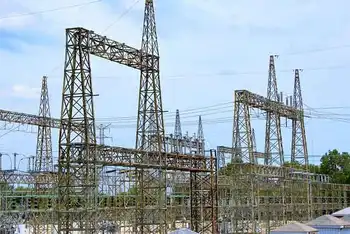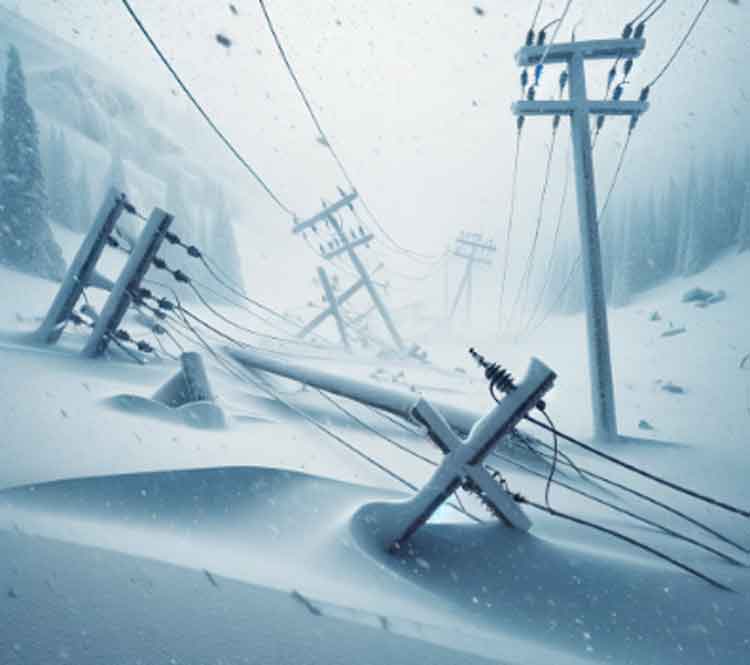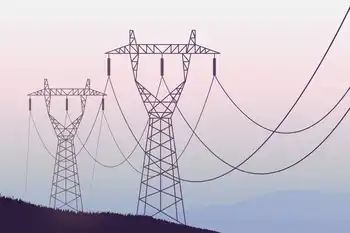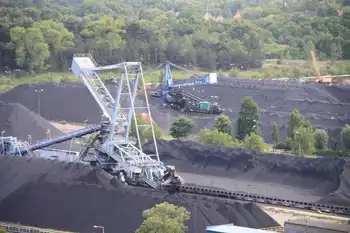Reactor failings offer a lesson for U.S.
JAPAN - Emergency vents that American officials have said would prevent devastating hydrogen explosions at nuclear plants in the United States were put to the test in Japan — and failed to work, according to experts and officials with the company that operates the crippled Fukushima Daiichi plant.
The failure of the vents calls into question the safety of similar nuclear power plants in the United States and Japan. After the venting failed at the Fukushima plant, the hydrogen gas fueled explosions that spewed radioactive materials into the atmosphere, reaching levels about 10 percent of estimated emissions at Chernobyl, according to JapanÂ’s nuclear regulatory agency.
Venting was critical to relieving pressure that was building up inside several reactors after the March 11 tsunami knocked out the plantÂ’s crucial cooling systems. Without flowing water to cool the reactorsÂ’ cores, they had begun to dangerously overheat.
American officials had said early on that reactors in the United States would be safe from such disasters because they were equipped with new, stronger venting systems. But Tokyo Electric Power Company, which runs the plant, now says that Fukushima Daiichi had installed the same vents years ago.
Government officials have also suggested that one of the primary causes of the explosions was a several-hour delay in a decision to use the vents, as Tokyo Electric managers agonized over whether to resort to emergency measures that would allow a substantial amount of radioactive materials to escape into the air.
But the release of company documents and interviews with experts provides the most comprehensive evidence yet that mechanical failures and design flaws in the venting system also contributed to delays. The documents paint a picture of increasing desperation at the plant in the early hours of the disaster, as workers who had finally gotten the go-ahead to vent realized that the system would not respond to their commands.
While venting would have allowed some radioactive materials to escape, analysts say that those releases would have been far smaller than those that followed the explosions at three of the plantÂ’s reactors, which blew open containment buildings meant to serve as a first line of defense against catastrophe. The blasts may also have been responsible for breaches in containment vessels that have complicated efforts to cool the fuel rods and contain radioactive leaks from the site.
One reason the venting system at the plant, which was built by General Electric, did not work is that it relied on the same sources of electricity as the rest of the plant: backup generators that were in basements at the plant and vulnerable to tsunamis. But the earthquake may also have damaged the valves that are part of the venting system, preventing them from working even when operators tried to manually open them, Tokyo Electric officials said.
In either case, regulators in the United States and Japan will now need to determine if such systems at similar plants designed by GE need to undergo expensive and time-consuming retrofitting or redesign to allow them to function even in severe accidents.
“Japan is going to teach us lessons,” said David Lochbaum at the Union of Concerned Scientists. “If we’re in a situation where we can’t vent where we need to, we need to fix that.”
Officials from General Electric did not comment.
The seriousness of the crisis at the Fukushima plant became evident within hours of the quake and the tsunami that rushed over the plantÂ’s sea wall.
Just 12 hours after the quake, the pressure inside Reactor No. 1 had reached roughly twice the maximum pressure the unit had been designed to withstand, raising fears that the vessels that house fuel rods would rupture, setting a possible meltdown in motion. With the pressure high, pumping in additional cooling water also was not possible.
The government became rattled enough that it ordered Tokyo Electric to begin venting. But even then, Tokyo Electric’s executives continued to deliberate, according to a person close to government efforts to bring the reactors under control. The exchanges became so heated, the person said, that the company’s nuclear chief, Vice President Sakae Muto, and the stricken plant’s director, Masao Yoshida, engaged in a “shouting match” — a rarity in reserved Japan.
Mr. Yoshida wanted to vent as soon as possible, but Mr. Muto was skeptical whether venting would work, the person said, requesting anonymity because he is still an adviser to the government and is not permitted to comment publicly. “There was hesitation, arguments and sheer confusion over what to do,” he said.
The executives did not give the order to begin venting until Saturday — more than 17 hours after the tsunami struck and 6 hours after the government order to vent.
As workers scrambled to comply with their new directive, they faced a cascading series of complications.
The venting system is designed to be operated from the control room, but operatorsÂ’ attempts to turn it on failed, most likely because the power to open critical valves was out. The valves are designed so they can also be opened manually, but by that time, workers found radiation levels near the venting system at Reactor No. 1 were already too high to approach, according to Tokyo ElectricÂ’s records.
At Reactor No. 2, workers tried to manually open the safety valves, but pressure did not fall inside the reactor, making it unclear whether venting was successful, the records show. At Reactor No. 3, workers tried seven times to manually open the valve, but it kept closing, the records say.
The results of the failed venting were disastrous.
Reactor No. 1 exploded first, on Saturday, the day after the earthquake. Reactor No. 3 came next, on Monday. And No. 2 exploded early Tuesday morning.
With each explosion, radioactive materials surged into the air, forcing the evacuation of tens of thousands of earthquake survivors living near the plant, contaminating crops and sending a faint plume of radioactive isotopes as far as the United States within days. Aerial photos of the reactor buildings showed No. 1 and 3 had been blown apart and another was seriously damaged.
As the troubles mounted, Tokyo Electric and government officials conducted a series of news conferences that began to suggest the scope of the damage. The blasts, they said, probably caused breaches in containment vessels that are among the final layers of protection against meltdowns and even larger releases of radioactive materials.
Tokyo Electric in recent days has acknowledged that damage at the plant was worse than previously thought, with fuel rods most likely melting completely at Reactors 1, 2 and 3 in the early hours of the crisis, raising the danger of more catastrophic releases of radioactive materials. The company also said new evidence seemed to confirm that at Reactor No. 1, the pressure vessel, the last layer of protection, was broken and leaking radioactive water.
The improved venting system at the Fukushima plant was first mandated for use in the United States in the late 1980s as part of a “safety enhancement program” for boiling-water reactors that used the Mark I containment system, which had been designed by General Electric in the 1960s. Between 1998 and 2001, Tokyo Electric followed suit at Fukushima Daiichi, where five of six reactors use the Mark I design.
The company said that was the case, after a review of Japanese regulatory filings made in 2002 showed that the vents had been installed.
The fortified venting system addressed concerns that the existing systems were not strong enough to channel pent-up pressure inside the reactors in an emergency. Pressure would be expected to rise along with temperature, damaging the zirconium cladding on the fuel rods at the reactor core and allowing them to react chemically with water to produce zirconium oxide and hydrogen gas.
The new vents were designed to send steam and gas directly from the reactorÂ’s primary containment, which houses the reactor vessel, racing past the usual filters and gas treatment systems that would normally slow releases of gas and eliminate most radioactive materials.
But the emergency vents were fitted with numerous safeguards, some of which require electricity to work, rendering them useless when all power is lost at a nuclear plant, experts say.
The most important of those safeguards are the valves, operated from a switch under lock and key in the control room, that must be opened for the vents to work. When a key is inserted into the keyboard in the nuclear reactorÂ’s control room and turned, the valves are supposed to open, letting gases rush out of the reactor building.
Tokyo Electric has said the valves did not work at Fukushima Daiichi after the power failed.
That would suggest that operators of similar plants in the United States and Japan could protect reactors by moving generators to higher floors if the equipment is currently in places that could be affected by tsunamis or flooding from rivers.
But a redesign of the venting system itself might also be necessary.
The design is the result of conflicting schools of thought among United States nuclear officials, said Michael Friedlander, a former senior operator at several American nuclear power plants.
Mr. Friedlander said, referring to the Nuclear Regulatory Commission: “You have the NRC containment isolation guys who want containment closed, always, under every conceivable accident scenario, and then you’ve got the reactor safety guys who need containment to be vented under severe accident scenarios. It is a very controversial system.”
Related News
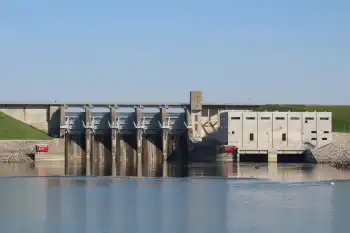
Some old dams are being given a new power: generating clean electricity
TORONTO - As countries race to get their power grids off fossil fuels to fight climate change, there's a big push in the U.S. to upgrade dams built for purposes such as water management or navigation with a feature they never had before — hydroelectric turbines.
And the strategy is being used in parts of Canada, too.
The U.S. Energy Information Administration says only three per cent of 90,000 U.S. dams currently generate electricity. A 2012 report from the U.S. Department of Energy found that those dams have 12,000 megawatts (MW) of potential hydroelectric generation capacity. (According to the National Hydropower Association,…

